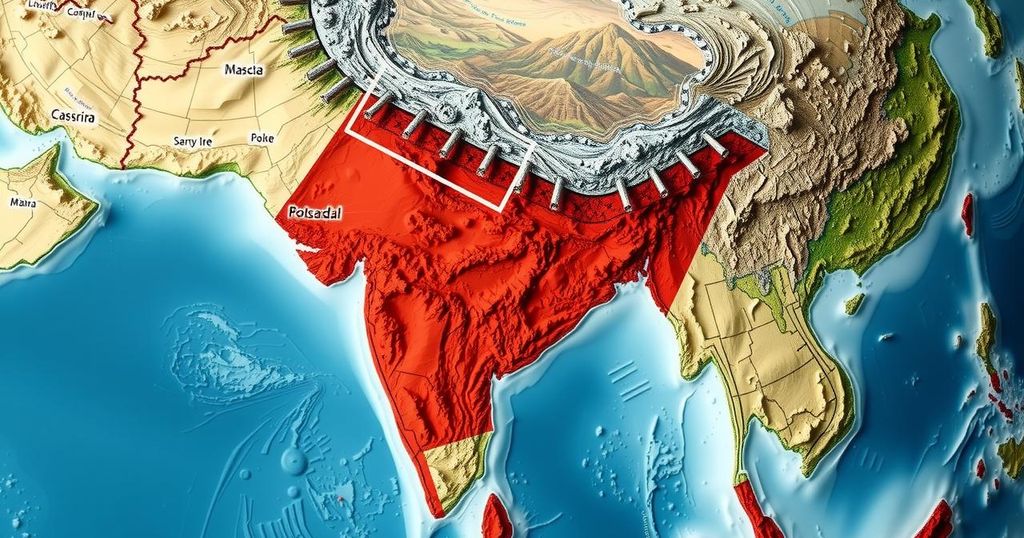India’s Susceptibility to Major Earthquakes: Recent Events and Global Analysis

A recent powerful earthquake of 7.1 magnitude struck near the Nepal-Tibet border, impacting northern India. India ranks as the seventh most earthquake-prone country, having experienced 58 significant earthquakes since 1990. Geographical vulnerabilities contribute to this risk, especially in the Himalayan region, which has seen major historical quakes. Data highlight the need for improved preparedness in India and other vulnerable nations.
On January 7, 2025, a powerful earthquake measuring 7.1 on the Richter scale struck southern Tibet, with significant tremors felt across northern India. The quake’s epicenter was located near the Nepal-Tibet frontier, approximately 93 kilometers northeast of Lobuche. This event marked the strongest seismic occurrence in the region since the devastating earthquakes in Nepal in April 2015, which resulted in approximately 10,000 fatalities.
India is recognized as the seventh most earthquake-prone country globally, having experienced 58 major earthquakes from 1990 to early 2024. Notably, 59 percent of India’s land area is at risk of moderate to severe seismic events rated at intensity VII or higher on the MSK scale. The country’s susceptibility arises from its geographical location at the convergence of multiple tectonic plates and unregulated construction practices.
When analyzing earthquake data spanning from 1990 to 2024, China has experienced the highest number of major earthquakes, totaling 186 significant events, while Indonesia follows closely with 166 incidents. Other notable countries include Iran, Japan, and the United States, with 109, 98, and 78 events respectively.
The Himalayan region, where India is located, remains especially vulnerable, having witnessed several powerful earthquakes over the past century. These include historical seismic events such as the Shillong earthquake of 1897 and the Bihar-Nepal earthquake of 1934, both of which had magnitudes exceeding 8.0.
As the global understanding of seismic activity grows, it is critical for countries, especially those in highly vulnerable regions like India, to enhance their preparedness and response capabilities to mitigate the impacts of future earthquakes.
The article discusses the occurrence of significant earthquakes in India, particularly a recent 7.1 magnitude earthquake in southern Tibet, and its effects felt across northern India. The analysis extends to the broader context of global seismic activity, highlighting key countries that have experienced the most major earthquakes over the past three decades. It also emphasizes India’s vulnerability as the seventh most earthquake-prone country, detailing the factors contributing to this risk and historical seismic events in the Himalayan region.
In conclusion, India is indeed among the countries severely affected by earthquake activity, ranking as the seventh most earthquake-prone nation globally. The geological characteristics and historical data indicate that India faces substantial risk from seismic events. With approximately 59 percent of its land area at risk and a notable history of significant earthquakes in the Himalayan region, it is imperative for India to advance its earthquake preparedness and resilience strategies.
Original Source: indianexpress.com








